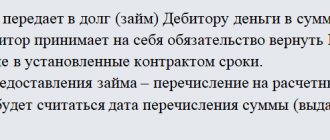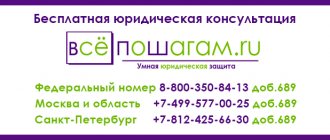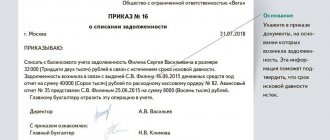Loans between related parties are common transactions, which, however, does not exempt them from tax risks. The latter are due to the fact that such loans can be made for selfish purposes and serve to launder funds. Therefore, such transactions are accompanied by enhanced control.
Question: Does the lender need to determine income based on the market interest rate for the use of funds if an interest-free loan agreement is concluded between related parties using the simplified tax system? View answer
Loan agreement between related parties
Interdependent organizations are entities that meet a number of characteristics. They are specified in paragraph 2 of Article 105.1 of the Tax Code of the Russian Federation:
- One entity participates in the capital of the second by more than 25%.
- One entity owns more than 50% of another.
- The heads of the organizations are the same persons.
- The management teams of the companies include the same individuals.
Question: Does an LLC have the right to issue an interest-free loan to an individual entrepreneur if he is one of the founders and director? Is such a loan considered a transaction with related parties? Does an individual entrepreneur have income subject to personal income tax? View answer
Establishing interdependence can be carried out on other grounds if they have a significant impact on the terms of transactions between legal entities (clause 2 of Article 105.1 of the Tax Code of the Russian Federation).
What does a taxpayer need to know about transactions between related parties ?
Loan agreements between interdependent entities are divided into these types:
- Paid. The borrower returns to the lender not only the amount of debt, but also the interest on it.
- Free. Interest is not calculated.
Loans between interdependent legal entities can be classified as controlled transactions if the signs from subparagraphs 2-3 of Article 105.14 of the Tax Code of the Russian Federation are present.
What are interest-free loans between related parties ?
Tax consequences of interest-free loans between related parties
If a transaction with an interest-free loan is carried out between organizations that are interdependent, then additional tax consequences arise in connection with Section V of the Tax Code of the Russian Federation.
If the transaction does not fall under the criteria of a controlled one, and the parties to the transaction are Russian organizations or citizens, then they do not bear additional tax risks. If one of the interdependent parties is a foreign entity, then such a transaction automatically falls under the controlled ones (Article 105.14 of the Tax Code of the Russian Federation, letter of the Ministry of Finance of the Russian Federation dated September 4, 2015 No. 03-01-11/51070), and for this option - the next section of the article.
ATTENTION! As of 01/01/2017, a new tax rule is in effect. If a transaction involving an interest-free loan is carried out between interdependent legal entities that are registered on the territory of the Russian Federation, or with the participation of citizens of the Russian Federation, then it is not recognized as controlled (subclause 7, clause 4, article 105.14 of the Tax Code of the Russian Federation).
This means that the lender is now safe from additional income in the form of interest at the market rate. In the letter of the Ministry of Finance dated 04/21/2017 No. 03-12-11/1/24048, it is commented that the innovation is also valid for contracts concluded earlier than 01/01/2017, the main thing is that income and expenses on it are recognized after 01/01/2017.
Interest loan
Transactions are partially regulated by letter of the Ministry of Finance No. 03-01-18/40737 dated July 15, 2015. It states that when forming interest on a loan between interdependent persons, it is not necessary to apply to the Tax Code of the Russian Federation. The percentage can be any amount.
When determining the tax base, the creditor's income from interest is taken into account as part of non-operating income on the basis of paragraph 6 of Article 250 of the Tax Code of the Russian Federation. The debtor includes paid interest in non-operating expenses on the basis of paragraph 1 of Article 265 of the Tax Code of the Russian Federation. Article 269 of the Tax Code of the Russian Federation states that the procedure for recognizing interest is determined by whether the transaction is recognized as controlled:
- The transaction is not recognized as controlled. Interest is taken into account in the amount calculated from the interest rate. The latter is taken from the contract.
- The transaction was recognized as controlled. Interest is taken into account based on the contractual rate within the limits prescribed in paragraph 1.2 of Article 269 of the Tax Code of the Russian Federation.
Let's consider the limits established by Article 269 of the Tax Code of the Russian Federation:
- Debt in rubles incurred from January 1, 2015 to December 31, 2015 – 0-180% of the Central Bank rate.
- Debt in rubles arising from January 1, 2021 – 75%-125% of the Central Bank rate.
- Debt in foreign currency - the rate is set on the basis of subparagraphs 2-6 of paragraph 1.2 of Article 269 of the Tax Code of the Russian Federation.
The key rate of the Central Bank from May 2, 2021 is 9.25% per annum.
Interest on loans between related parties
In a letter dated July 15, 2015 No. 03-01-18/40737, the Ministry of Finance of the Russian Federation explained that companies, including interdependent ones, are legally allowed to enter into loan agreements on terms convenient for them. However, for income tax purposes, interest on such transactions for interdependent persons (VLPs) is taken into account in accordance with clause 1.1 of Art. 269 of the Tax Code of the Russian Federation.
Transactions between related parties are considered controlled if they are characterized by the conditions of Art. 105.14 Tax Code of the Russian Federation. From January 1, 2015, tax legislation considers interest on debt obligations on controlled transactions between overhead lines as income/expense determined based on the actual rate, but within the limits of the rates fixed in clause 1.2 of Art. 269 of the Tax Code of the Russian Federation.
Here's what these rates look like on ruble loans:
- for the period from January 1 to December 31, 2015 - from 0 to 180% of the key rate of the Central Bank of the Russian Federation;
- after January 1, 2021 - from 75 to 125% of the key rate of the Central Bank of the Russian Federation.
For loans in foreign currency, the rates are determined based on the rates EURIBOR, SHIBOR, LIBOR on the conditions specified in sub. 2-6 clause 1.2 art. 269 of the Tax Code of the Russian Federation.
Interest-free loan
Interest-free loans between interdependent legal entities serve for simple redistribution of funds within a group of companies. Such transactions are not prohibited by law. However, they also entail tax risks. The latter refers to the possible additional charge of income tax.
The lender's taxable income is established based on the amount of interest that could hypothetically be received in a similar transaction with an outside entity. That is, you need to turn to comparable transactions. The corresponding provision is contained in paragraph 1 of Article 105.3 of the Tax Code of the Russian Federation.
The interest-free transaction creates income for the lender, which will be subject to income tax. This means that interest will have to be paid in any case. For the debtor, receiving an interest-free loan does not generate income. The financial benefit received does not increase the tax base. The corresponding rule is contained in the letter of the Ministry of Finance No. 03-03-06/1/5149 dated February 9, 2015.
The following scheme is possible: one subject takes out a loan from a bank. Funds in the form of an interest-free loan are transferred to the dependent entity. In this case, tax representatives may recognize the resulting benefit as unjustified. However, if such a redistribution of funds does not contradict the Tax Code, it is possible to make an arbitration decision in favor of the subject. An example of this is the resolution of the AS SZO No. A56-60966/2014 dated July 1, 2015.
Which persons are considered interdependent?
The Tax Code states: if the specifics of the relationship between persons may influence the conditions and (or) results of transactions carried out by these persons, and (or) the economic results of the activities of these persons or the activities of the persons they represent, these persons are recognized as interdependent for tax purposes.
To recognize the mutual dependence of persons, the influence that may be exerted due to the participation of one person in the capital of other persons in accordance with an agreement concluded between them or in the presence of another ability of one person to determine the decisions made by other persons is taken into account. In this case, such influence is taken into account regardless of whether it can be exerted by one person directly and independently or jointly with his interdependent persons.
In accordance with paragraph 2 of Art. 105.1 of the Tax Code of the Russian Federation the following are recognized as interdependent persons:
- organizations if one of them directly and (or) indirectly participates in another and the share of such participation is more than 25%;
- an individual and an organization if such an individual directly and (or) indirectly participates in such an organization and the share of such participation is more than 25%;
- organizations if the same person directly and (or) indirectly participates in these organizations and the share of such participation in each organization is more than 25%;
- an organization and a person who has the authority to appoint (elect) the sole executive body of this organization or to appoint (elect) at least 50% of the composition of the collegial executive body or board of directors (supervisory board) of this organization;
- organizations whose sole executive bodies or at least 50% of the composition of the collegial executive body or board of directors (supervisory board) of which are appointed or elected by decision of the same person;
- organizations in which more than 50% of the collegial executive body or board of directors (supervisory board) are the same individuals;
- organization and person exercising the powers of its sole executive body;
- organizations in which the powers of the sole executive body are exercised by the same person;
- organizations and (or) individuals if the share of direct participation of each previous person in each subsequent organization is more than 50%;
- individuals in the event that one individual is subordinate to another individual due to official position;
- an individual, his spouse, parents (including adoptive parents), children (including adopted children), full and half brothers and sisters, guardian (trustee) and ward.
Some clarifications need to be made here. So, in accordance with Art. 105.2 of the Tax Code of the Russian Federation, a direct participation interest is recognized as a share of voting shares of another organization directly owned by one organization or a share directly owned by one organization in the authorized (share) capital (fund) of another organization, and if it is impossible to determine such shares - a share directly owned by one organization, proportional to the number participants in another organization.
The share of indirect participation of one organization in another is recognized as a share that is established in the following order:
1) all sequences of participation of one organization in another are determined through the direct participation of each previous organization in each subsequent organization of the corresponding sequence;
2) the shares of direct participation of each previous organization in each subsequent organization of the corresponding sequence are determined;
3) the products of the shares of direct participation of one organization in another through the participation of each previous organization in each subsequent organization of all sequences are summed up.
Example. Foreign entity A owns 75% of the shares of Company B. The latter, in turn, owns 30% of the shares of Russian trading company C. Also, Company A owns 15% of the shares of Company D, which owns 40% of the shares of Russian trading company C. In such a situation, the share indirect participation of foreign organization A in the authorized capital of Russian trading company C will be 28.5% (75 x 30 + 15 x 40). Accordingly, foreign organization A and Russian trading company C can be recognized as interdependent entities.
The rules described above also apply when determining the share of participation of an individual in an organization. It should be noted that according to paragraph 4 of Art. 105.2 of the Tax Code of the Russian Federation during the trial, additional circumstances may be taken into account when determining the share of participation of one organization in another organization or an individual in an organization.
Please note the following:
1. If the conditions and (or) results of transactions carried out by persons and (or) the economic results of their activities are influenced by one or more other persons due to their predominant position in the market or due to other similar circumstances determined by the peculiarities of the transactions performed, such influence is not a basis for recognizing persons as interdependent for tax purposes (clause 4 of article 105.1 of the Tax Code of the Russian Federation).
2. Direct and (or) indirect participation of the Russian Federation, constituent entities of the Russian Federation, municipalities in Russian organizations in itself is not a basis for recognizing such organizations as interdependent. At the same time, these organizations may be recognized as interdependent on other grounds provided for in Art. 105.1 of the Tax Code of the Russian Federation (clause 5 of Article 105.1 of the Tax Code of the Russian Federation).
3. If, in the opinion of organizations and (or) individuals, the specifics of the relationship between them may influence the conditions and (or) results of transactions they make, these organizations and (or) individuals have the right to independently recognize themselves as interdependent persons for tax purposes ( Clause 6 of Article 105.1 of the Tax Code of the Russian Federation).
4. A court may recognize persons as interdependent on other grounds (Clause 7, Article 105.1 of the Tax Code of the Russian Federation).
Controllability of transactions
Typically, loans between interdependent legal entities are interest-free or issued at a symbolic interest rate. The purpose of such transactions is to replenish the debtor's working capital. Therefore, when making transactions, the question of controllability arises.
Letters of the Ministry of Finance No. 03-01-18/6-114 dated August 28, 2012 and No. 03-1-18/5-92 dated July 5, 2012 contain these arguments:
- The characteristics of controlled transactions are contained in Article 105.14 of the Tax Code of the Russian Federation. Transactions specified in subparagraphs 2 and 3 of paragraph 1 and subparagraphs 1-5 of paragraph 2 of the same article are considered controlled when the amount of income on them in a year exceeds the corresponding amount criterion.
- Clause 9 of Article 105.14 of the Tax Code of the Russian Federation states that the amount of income from transactions for the year is formed by adding the income from such transactions with one related party. In this case, the procedure for recognizing income contained in Chapter 25 of the Tax Code of the Russian Federation is taken into account.
The letter of the Ministry of Finance No. 03-01-18/4-67 dated May 23, 2012 states that when determining the amount of income to establish the controllability of a transaction, it is necessary to take into account income in the form of interest received under the loan agreement. Loan income (principal amount) is not taken into account in the calculations.
IMPORTANT! If a transaction is recognized as controlled, both income and expenses in the form of interest will be controlled.
Signs of controlled transactions
According to the general rules, controlled transactions are transactions (clause 1 of Article 105.14 of the Tax Code of the Russian Federation):
- with a Russian related party, if the annual amount of income from transactions is more than 1 billion rubles (subclause 1, clause 2, article 105.14 of the Tax Code of the Russian Federation);
- with an interdependent person on the simplified tax system, if the annual amount of income from transactions is more than 60 million rubles (subclause 4, clause 2, clause 3, article 105.14 of the Tax Code of the Russian Federation);
- with an interdependent person - a payer of the unified agricultural tax or UTII, if the annual amount of income from transactions is more than 100 million rubles (subclause 3, clause 2, clause 3, article 105.14 of the Tax Code of the Russian Federation);
- with offshore companies, if the annual amount of income from transactions is more than 60 million rubles (subclause 3, clause 1, clause 7, article 105.14 of the Tax Code of the Russian Federation);
- with an interdependent person - a foreign organization, including an offshore company, or a non-resident, regardless of the amount (letter of the Ministry of Finance of Russia dated May 10, 2016 No. 03-01-18/28673, Federal Tax Service of Russia dated August 17, 2017 No. ZN-4-17/ [email protected] ).
- transactions in the field of foreign trade in goods of world exchange trade, if the annual amount of income from transactions with one person is more than 60 million rubles (subclause 2, clause 1, clauses 5 - 7, article 105.14 of the Tax Code of the Russian Federation).
Tax risks
As already mentioned, loans between interdependent entities entail tax risks. They will be different for the borrower and the lender.
Risks for the borrower
Transactions between related parties are subject to administration by the Federal Tax Service. The transaction is checked for compliance with market prices (based on letter of the Ministry of Finance No. 03-01-18/9-173 dated November 19, 2012). The type of loans in question must comply with the special requirements of the Tax Code of the Russian Federation. In particular, the assessment of income in case of gratuitous transfer is carried out on the basis of market prices established on the basis of 105.3 of the Tax Code of the Russian Federation.
Risks for the lender
If, as part of a loan, property is transferred to a dependent entity for gratuitous use, the payer makes the decision to pay VAT as for the sale of services independently. However, he needs to take into account that refusal to charge VAT on the market value entails significant tax risks.
IMPORTANT! Accrued VAT is not taken into account for profit tax purposes on the basis of paragraph 19 of Article 270 of the Tax Code of the Russian Federation.
In what cases do tax risks arise?
Tax risks arise in two cases:
- The loan falls under the characteristics of controlled transactions established by subparagraph 1 of paragraph 2 of Article 105.14 of the Tax Code of the Russian Federation (availability of a certain amount and interdependence of participants).
- The loan was provided on non-market terms (no interest or a symbolic amount).
Legal entities must take into account that most transactions between interdependent entities are controlled.
Interest-free loan between interdependent legal entities
Fiscal authorities separately control persons falling under the criteria of interdependence, because are interested in taxes being calculated based on the real cost of goods and services, and not underestimated (in order to minimize mandatory payments to the budget). As practice shows, various schemes can be used that lead to such minimization (including understating interest on loans between related parties).
The law does not prohibit such transactions. Tax consequences are possible only if a specific transaction falls under the criteria of a controlled one. In other cases, the price applied by the parties to the transaction is not subject to adjustment by the fiscal authorities.
Additional Information
On January 1, 2021, some changes to tax legislation came into force. In particular, interest-free loans between Russian interdependent entities are not subject to control. The relevant provisions are contained in subparagraph 7, paragraph 4 of Article 105.14 of the Tax Code of the Russian Federation, in letter of the Ministry of Finance No. 03-03-RZ/16846 dated March 23, 2017. The Federal Tax Service letter No. ED-4-13/6968 dated April 13, 2021 states that the loan is not subject to tax control if the place of registration of the legal entity is Russia. The date of conclusion of the contract is not taken into account.
Can interdependent persons enter into a loan agreement?
If the said transaction took place between related parties (hereinafter referred to as VL), the lender generates income in the form of unearned interest, which must be taken into account for tax purposes. It is believed that the rules sub. 11 clause 1 art. 251 of the Tax Code of the Russian Federation (hereinafter referred to as the Tax Code of the Russian Federation) do not apply to this situation (see letter of the Ministry of Finance of Russia dated July 18, 2021 No. 03-01-18/5-97).
In the course of their activities, enterprises often lend each other additional financing. How is a loan provided between related legal entities - do the tax consequences differ depending on the terms of the transactions? What are the risks of obtaining interest-free loans? How should interest on debt be accounted for? First things first.
Are transactions between dependent parties permissible?
The law cannot prohibit two companies from conducting a transaction just because their managers are, for example, relatives. Moreover, the principle of due diligence forces us to carefully check our counterparties and not work with just anyone. In this regard, choosing a supplier headed by a well-known and trusted person seems quite logical. However, this is true only if the requirement of paragraph 1 of Article 105.3 of the Tax Code of the Russian Federation is met: special conditions cannot be established in such a transaction. In other words, you need to enter into an agreement with a dependent organization on the same terms on which it would be concluded with a completely “unfamiliar” company.
The terms of the transaction in this case mean not only the price, but also all others. For example, giving preference to your buyer in the form of free shipping and/or insurance may be considered a special condition of the transaction. Of course, in the event that the company does not indulge its other clients with such attention. The same can be said about granting a dependent organization a deferred payment. In general, any conditions for working with organizations or individual entrepreneurs that are in one way or another dependent or controlled must be absolutely market-based.
If you adhere to the above principle, then you can carry out transactions with dependent parties. Of course, provided that both parties to the transaction are bona fide taxpayers and regularly fulfill their duties. Then the tax inspectorate will have no reason to find fault with the operation.
Features of the loan
Relations between the parties to the loan agreement are regulated by Chapter 42 of the Civil Code of the Russian Federation. An indication that interest is not charged must be contained in the text of the loan agreement. If there is no mention of the interest-free loan in the agreement, but interest is not established, then according to paragraphs. 1, 3 tbsp. 809 of the Civil Code of the Russian Federation, the lender has the right to demand interest from the borrower for the use of funds. The interest rate is calculated at the refinancing rate of the Central Bank of the Russian Federation on the date of payment of the debt or part thereof. If the subject of the loan is things, the loan is automatically considered interest-free.
If the agreement specifies the purpose for which the loan should be spent, then the money can only be spent on these purposes. The borrower must provide the lender with unhindered access to expenditure documentation upon request. In case of violations, the lender has the right to demand repayment of the loan. Since the agreement is a real transaction, it begins to take effect from the moment the borrower receives funds or things.
Is such a deal possible?
Interest-free loans between legal entities are not prohibited by law. The parties to the agreement can be both independent organizations and interdependent persons. This legal relationship is regulated by Articles 807, 808, 809 of the Civil Code of the Russian Federation.
What does the law say?
The possibility of transferring funds or things from one organization to another under a gratuitous loan agreement is provided for by the Civil Code.
Regardless of the loan amount, the agreement between legal entities is concluded in writing, in accordance with Article 808 of the Civil Code of the Russian Federation. The condition that the loan is interest-free must also be reflected in the agreement, since otherwise, by default, the loan fee will be calculated at the refinancing rate (clause 1 of Article 809 of the Civil Code of the Russian Federation).
How to apply for a loan?
When applying for a loan, it is necessary to take into account the basic requirements imposed by civil law on loan agreements. The agreement specifies the loan amount, currency, procedure and terms of repayment. If the loan is taken in kind, a list of things is drawn up. Upon issuance of a loan in cash, financial documents are drawn up in the form of receipts, acts of acceptance and transfer of funds.
Necessary documents for drawing up a loan agreement:
- certificate of registration of the Unified State Register of Legal Entities;
- document confirming the powers of the General Director (Charter, order of appointment);
- details of the parties.
How to draw up a contract? The agreement is concluded in writing. Each party receives a separate copy, certified by the seals and signatures of the parties. The condition that the transaction is free of charge is indicated in the text.
A sample agreement is provided by legal reference services. When drawing up, this template can be taken as a basis and include individual characteristics inherent in a given transaction. The text must not contradict current legislation. The agreement includes the following items:
- names of the parties;
- subject of the contract;
- rights, duties and responsibilities of the parties;
- validity of the contract under force majeure circumstances;
- methods of resolving disputes;
- addresses and details of the parties.









